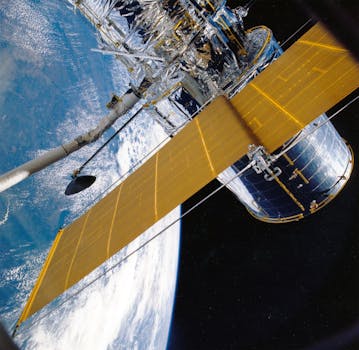From Geostationary to Low Earth Orbit: The Evolution of Satellite Telecommunications in 2023

From Geostationary to Low Earth Orbit: The Evolution of Satellite Telecommunications in 2023
Satellite telecommunications have undergone a significant transformation in recent years, with a shift from traditional geostationary orbit (GEO) satellites to low Earth orbit (LEO) satellites. This evolution has opened up new opportunities for the industry, enabling faster, more reliable, and more cost-effective communication services. In this article, we will explore the advancements in satellite technology and the impact of this shift on the industry.
Introduction to Satellite Telecommunications
Satellite telecommunications have been around for decades, with the first commercial satellite, Intelsat 1, launched in 1965. Since then, the industry has grown rapidly, with thousands of satellites launched into orbit. Traditional GEO satellites have been the backbone of the industry, providing a wide range of services, including television broadcasting, telecommunications, and navigation. However, GEO satellites have several limitations, including high latency, limited bandwidth, and high cost.
The Rise of Low Earth Orbit Satellites
LEO satellites have emerged as a game-changer in the satellite telecommunications industry. These satellites orbit the Earth at an altitude of around 160 to 2,000 kilometers, which is much lower than the 36,000 kilometers of GEO satellites. The lower altitude of LEO satellites reduces latency, increases bandwidth, and lowers the cost of launching and operating satellites. Several companies, including SpaceX, OneWeb, and Amazon’s Kuiper Systems, are launching constellations of LEO satellites to provide global internet coverage.
LEO satellites have several advantages over traditional GEO satellites. They have lower latency, which is essential for real-time communication services, such as video conferencing and online gaming. LEO satellites also have higher bandwidth, which enables faster data transfer rates. Additionally, the lower altitude of LEO satellites reduces the cost of launching and operating satellites, making them a more cost-effective option for satellite telecommunications.
Advancements in Satellite Technology
Several advancements in satellite technology have enabled the shift from GEO to LEO satellites. One of the key advancements is the development of phased array antennas, which enable satellites to steer beams electronically, increasing their flexibility and capacity. Another significant advancement is the use of high-throughput satellites (HTS), which provide higher bandwidth and faster data transfer rates. HTS satellites use multiple beams to provide higher capacity and are more efficient than traditional satellites.
Additionally, the development of reusable launch vehicles, such as SpaceX’s Falcon 9, has reduced the cost of launching satellites into orbit. This has made it more feasible for companies to launch constellations of LEO satellites, which require multiple launches to provide global coverage. The use of advanced materials and manufacturing techniques has also reduced the cost and increased the efficiency of satellite production.
Conclusion and Future Outlook
In conclusion, the evolution of satellite telecommunications from geostationary to low Earth orbit has transformed the industry. LEO satellites have opened up new opportunities for the industry, enabling faster, more reliable, and more cost-effective communication services. The advancements in satellite technology, including phased array antennas, high-throughput satellites, and reusable launch vehicles, have enabled the shift to LEO satellites. As the industry continues to evolve, we can expect to see even more innovative solutions, such as the integration of satellite and terrestrial networks, and the use of artificial intelligence and machine learning to optimize satellite operations.



